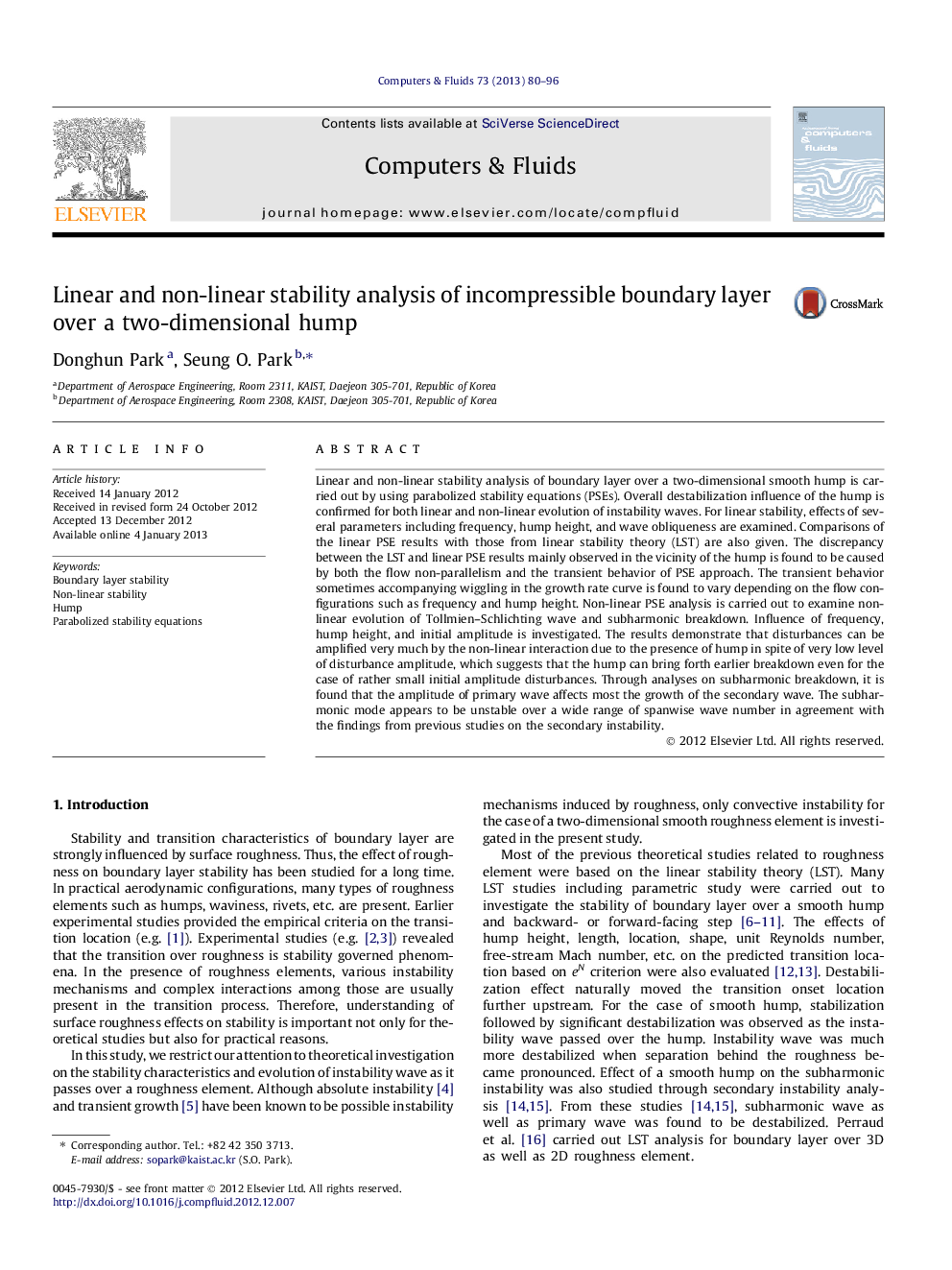| Article ID | Journal | Published Year | Pages | File Type |
|---|---|---|---|---|
| 762291 | Computers & Fluids | 2013 | 17 Pages |
Linear and non-linear stability analysis of boundary layer over a two-dimensional smooth hump is carried out by using parabolized stability equations (PSEs). Overall destabilization influence of the hump is confirmed for both linear and non-linear evolution of instability waves. For linear stability, effects of several parameters including frequency, hump height, and wave obliqueness are examined. Comparisons of the linear PSE results with those from linear stability theory (LST) are also given. The discrepancy between the LST and linear PSE results mainly observed in the vicinity of the hump is found to be caused by both the flow non-parallelism and the transient behavior of PSE approach. The transient behavior sometimes accompanying wiggling in the growth rate curve is found to vary depending on the flow configurations such as frequency and hump height. Non-linear PSE analysis is carried out to examine non-linear evolution of Tollmien–Schlichting wave and subharmonic breakdown. Influence of frequency, hump height, and initial amplitude is investigated. The results demonstrate that disturbances can be amplified very much by the non-linear interaction due to the presence of hump in spite of very low level of disturbance amplitude, which suggests that the hump can bring forth earlier breakdown even for the case of rather small initial amplitude disturbances. Through analyses on subharmonic breakdown, it is found that the amplitude of primary wave affects most the growth of the secondary wave. The subharmonic mode appears to be unstable over a wide range of spanwise wave number in agreement with the findings from previous studies on the secondary instability.
► We analyze stability of boundary layer over a 2D hump by using PSE. ► Comparison of the linear PSE results with those from LST is made. ► Non-linear PSE analysis is carried out for T–S wave and subharmonic breakdown. ► Effect of frequency, hump height, oblique angle, and initial amplitude is examined.
